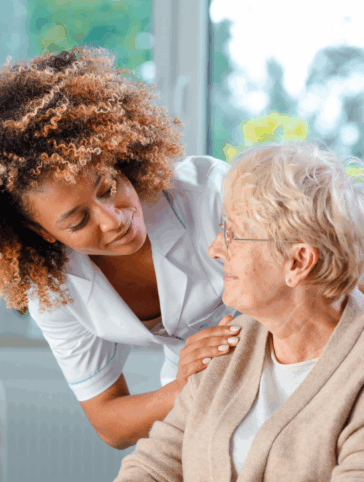For older adults, falls are a major risk. Although some falls may be unavoidable, good safety practices can reduce the risk. Keep the residents at your senior care facility safe by taking some key steps to prevent falls.
A Single Fall Can Be Devastating
The CDC says falls are a serious and costly problem. Falls can lead to serious injury, including broken bones and head injuries. People who have experienced a fall may also become afraid of falling again, causing them to reduce their activity.
- More than one in four adults over the age of 65 falls each year.
- One in five falls causes a broken bone, head injury, or other serious injury.
- 3 million older adults require emergency room treatment for fall injuries every year.
- More than 800,000 patients are hospitalized due to fall injuries every year.
- 95% of hip fractures are caused by falling.
Monitor Residents for Fall Risks
Certain factors can increase the risk of a fall. By monitoring your residents for these risks, you can take appropriate action to reduce risks.
According to the CDC, the following conditions are fall risk factors:
- Lower body weakness
- Vitamin D deficiency
- Difficulty walking
- Difficulty balancing
- Taking sedatives and other medications that impact balance
- Vision problems
- Foot pain
Make Your Facility Safe
Are slip and trip hazards lurking in the corners of your facility? As older adults have such a high risk of falling, senior care facilities need to prioritize fall prevention.
Simple improvements can help reduce the chance of a fall, such as:
- Installing handrails and grab bars. These are especially important by steps and in bathrooms.
- Fixing broken steps, cracked floors, and torn carpets. Since these can be dangerous tripping hazards, you need to fix them ASAP. Put a monitoring system into place to check for any new hazards regularly.
- Avoiding throw rugs that could pose a slipping hazard. Any rugs you use need to be nonslip to be safe for seniors and people with mobility issues.
- Removing clutter and tripping hazards from walkways. Take action to prevent residents tripping over an object like an extension cord.
- Providing sufficient lighting. If your residents can’t see where they’re going, they are more likely to trip. Keep in mind that older adults may also have vision problems. Motion sensor lights for dim areas or nighttime use are inexpensive and easy to install.
- Creating safe baths and showers. Provide nonslip rubber mats as needed, use benches or shower stools when appropriate and don’t forget those handrails and grab bars
- Cleaning up puddles. No matter if it’s from rain or a spill, you need to mop up any liquid on the floor immediately.
Promote Good Health and Balance
According to Johns Hopkins, older adults can reduce their risk of falling by doing exercises that promote strength and balance. As a senior living facility, you can encourage your residents to exercise by offering exercise classes appropriate for older adults.
Safety is important. Make sure your residents are capable of performing the exercises.
Responding to a Fall
Since falls are common among older adults, it’s important for senior care facility staff to know how to respond to a fall. Train workers on the correct way to react.
- Stay calm and help the resident. The resident may be frightened. Try to keep the situation under control.
- Obtain medical care as needed. If the resident is injured, you need to seek immediate medical care. When in doubt, always seek medical care.
- Monitor the resident. Keep in mind falls can cause injuries that may not be immediately obvious, such as concussions and internal bleeding. Conduct regular follow-up checks following the fall. Certain medications, such as blood thinners, may increase a resident’s risk of injury.
- Notify the family. Keep family members informed of falls to enable them to make decisions regarding their loved one’s care. If family members discover a loved one fell and you did not tell them about it, they might think your facility is trying to cover something up.
- Determine how to reduce the risk of future falls. The CDC says falling once doubles a person’s risk of falling again. You need to take every fall seriously, even if the resident is not severely injured. Otherwise, the resident could suffer a second fall with worse injuries.
- Document the situation. Update the resident’s file with information regarding the fall, the care you provided, and the steps you will be taking to reduce the risk of future falls.
Falls are common among the elderly, but this does not mean senior care facilities should be complacent about the risk. By taking steps to prevent falls, your facility can improve safety for your residents and reduce your own liability.
Do you need insurance coverage and risk management services tailored for your industry? Tangram provides insurance for adult residential care facilities through the Personal Care & Assisted Living Insurance Center (PCALIC). Learn more.
